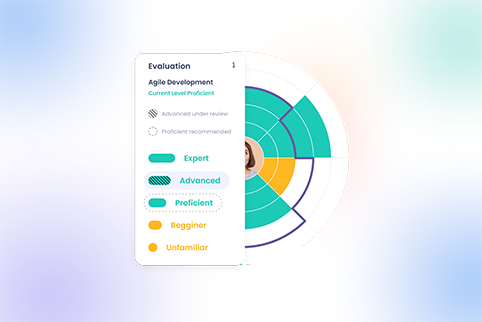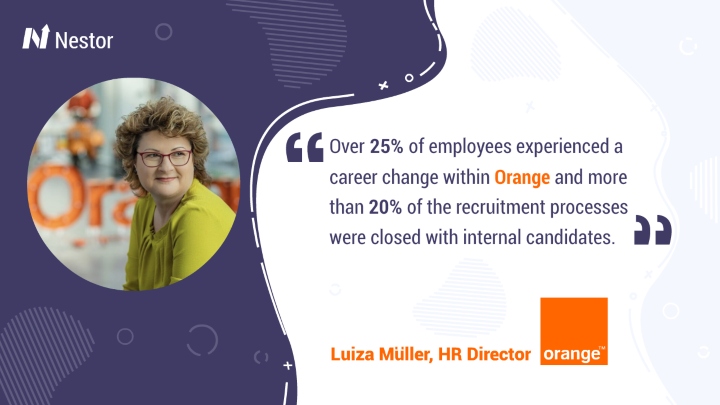People Success: The Key Element to Business Prosperity
6 min read

People success, a topic that has gained popularity in recent years, is a concept referring to the context that enables people to achieve their best selves.
Companies that nurture a culture where people can maximize their potential, and feel fulfilled and motivated will soon understand that people success is the most solid foundation for business success.
But what makes for successful employees?
It is a fact that people change jobs an average of 12 times during their careers and spend an average of five years or less in each position. Therefore a natural question arises: what makes for successful employees, and how can organizations be part of this process?
Although success metrics are not necessarily a one-size-fits-all model, some key elements carry their weight into this equation.
What are the key elements contributing to people success?
Engagement
Employees’ engagement is the foundation of any winning inspiring work culture. Understanding attitudes towards work, culture, or interaction with other peers are the first step in assessing people’s level of engagement and belonging, key elements that influence happiness at work, job satisfaction, and eventually the efforts to deliver better results.
High performance
Success means different things to different people. Still, when referring to people success in the workplace, one thing stands out – high performance. By nature, high performers tend to put success at the center of all their actions. They are relentlessly committed to performance goals through shared leadership, collaboration, open communication, early conflict resolution, and a strong sense of accountability.
Motivation
Successful businesses are driven by motivated individuals. There are two types of motivation that drive people’s actions: intrinsic – determined by internal motivation and extrinsic – dependent on external factors and stimulants.
According to ResearchGate, intrinsic motivation is considered the optimal form of motivation and is associated with various benefits – including enjoyment, persistence, and psychological well-being. Even so extrinsic motivators are sometimes thought to help promote action for behaviors that are not appealing enough to one’s personality.
Focus
You cannot achieve success without a clear and constant focus. As the famous author, psychologist, and science journalist Daniel Goleman states in one of his books, the focus is a way to describe the many forms of attention like concentration, free association, or being present in the moment. With so many distractions around us, exercising the right kind of attention at the right moment is essential to every part of life.
Purpose
Purpose is at the center of engagement, productivity, and retention. According to Deloitte’s 2021 Global Human Capital Trends Report, the purpose is one of the most important ties that binds the worker-employer relationship. Having a sense of purpose ignites employees’ intrinsic motivation mostly when it is on the same page with the vision their company is striving to reach.
Moreover, the new workforce generation is more attracted to organizations having a clear purpose and can articulate their WHYs. A clear vision is a magnet for talented individuals who can have a real contribution to a common goal.
Belonging
All employees want to feel that they belong in the workplace and that the organization cares about them and their individual needs. As research shows, belonging can have a big impact on the overall employee experience and at the same time can benefit businesses too.
Belonging can lead to a 56% increase in job performance, a 50% reduction in turnover risk, a 167% increase in employer net promoter score, 2X more employee raises, 18X more employee promotions, and a 75% decrease in sick days. The initiatives for diversity, equity, and inclusion (DEI) are a great way to start bringing everyone on board and fostering a culture of belonging.
Recognition
Providing timely, meaningful employee recognition should be a common practice for organizations’ efforts to retain talent, increase engagement and encourage high performance. You can show recognition through a variety of tactics either non-incentivized like celebrating daily wins or even by recognizing achievements outside work or monetary rewards for the initiatives that pay off.
Growth
Enabling employees’ growth means in the first place building an agile workforce aligned with the business priorities. Encourage your people on the path of growth and career development and support them to develop new skills through coaching sessions, feedback loops, or individual learning programs.
How to enable people success principles in your organization?
Ask for continuous feedback and act on it
Developing feedback programs inside your organization can be a powerful means to enhance performance and create a development culture. To achieve its goals, providing feedback should be an ongoing task. Ensuring a positive experience out of this process by focusing on what your people can improve instead of what they are doing wrong is another thing to keep in mind.
Important as it may be, collecting feedback might have quite the opposite effect if not accompanied by action. So whether you are trying to increase retention by unveiling new growth opportunities or improving engagement, you should identify and drive effective actions based on employees’ responses.
Encourage mentorship programs
Coaching is an effective practice for people development and greater job satisfaction as various studies show. Moreover, mentorship programs are a win-for-all approach with positive effects spreading from workplace culture, diversity and inclusion, and higher possibilities of being promoted or improved learning and development of the employees.
Make development programs a priority
Nearly one in three skills needed in 2018 will not be needed by 2022, predicts Gartner. According to the same survey, nearly 60% of HR leaders reported that building critical skills and competencies will be their number one priority in 2022.
In this rather gloomy context, learning and development programs should focus on equipping the employees not only with new skills and helping them grow in their roles but also help them adjust their mindset to the ever-changing environment and evolving organizational needs.
Final thoughts
Instead of writing down our final thoughts, we added this quote. Do you agree?
Success is peace of mind, which is a direct result of self-satisfaction in knowing you made the effort to become the best of which you are capable.
— John Wooden







